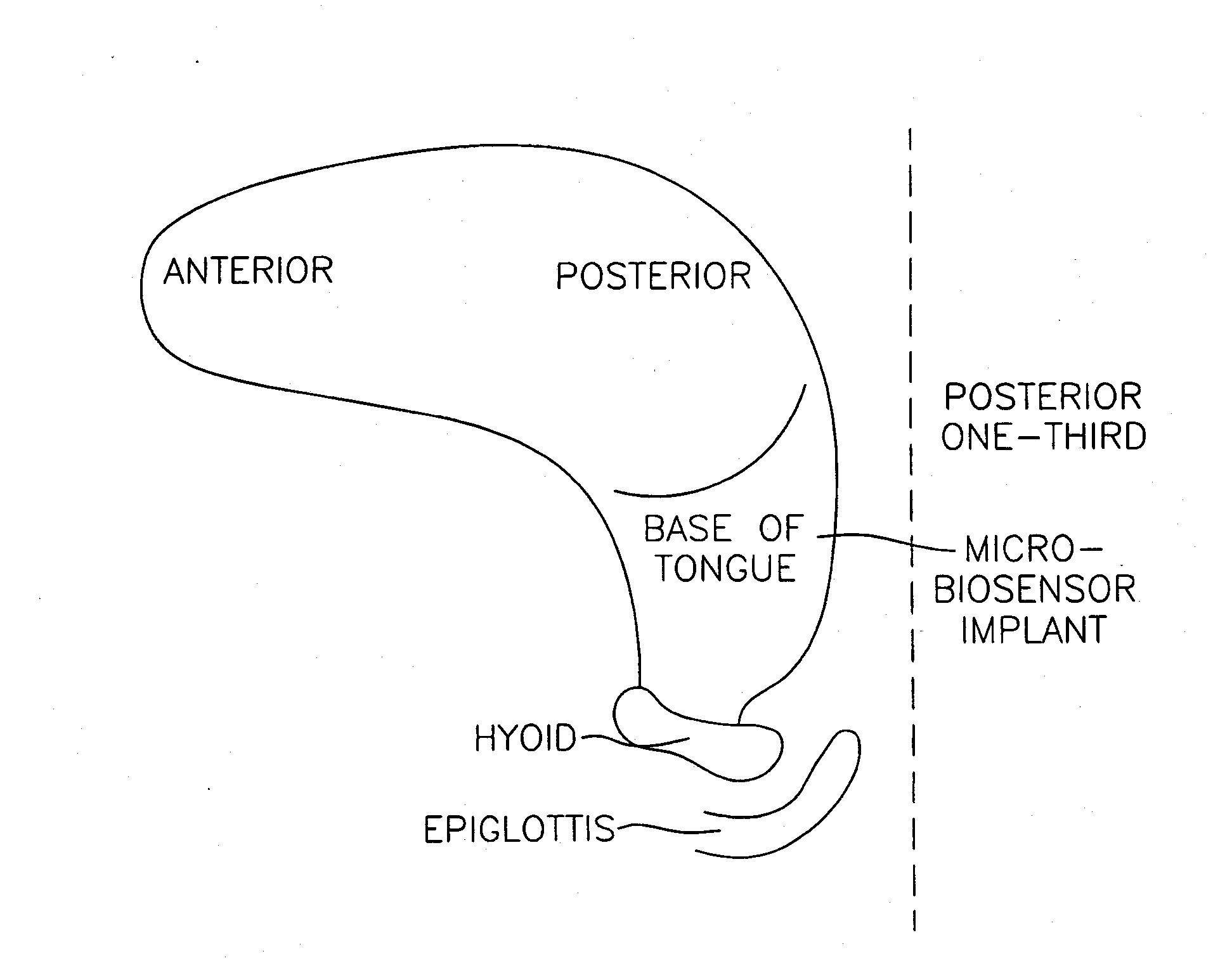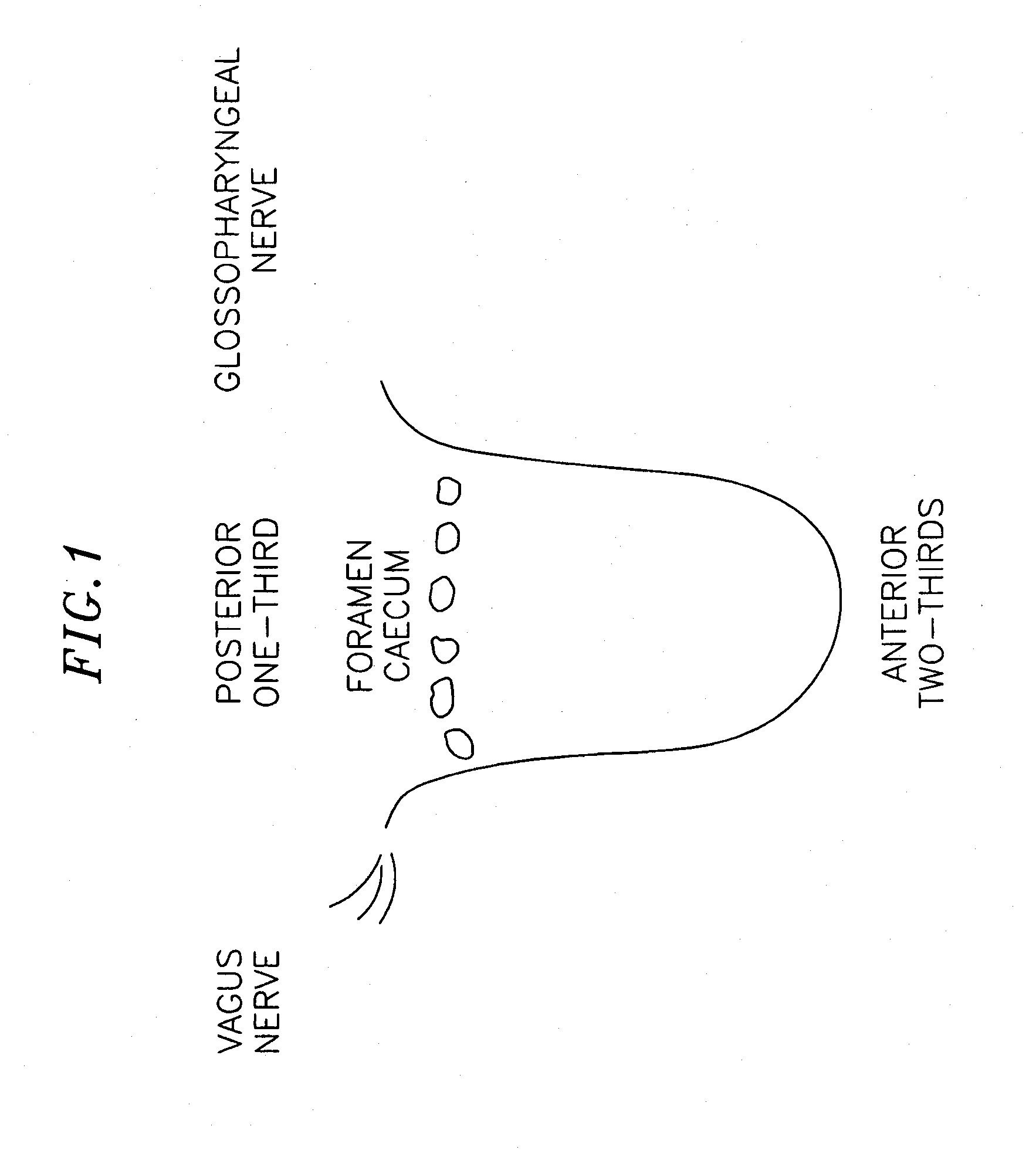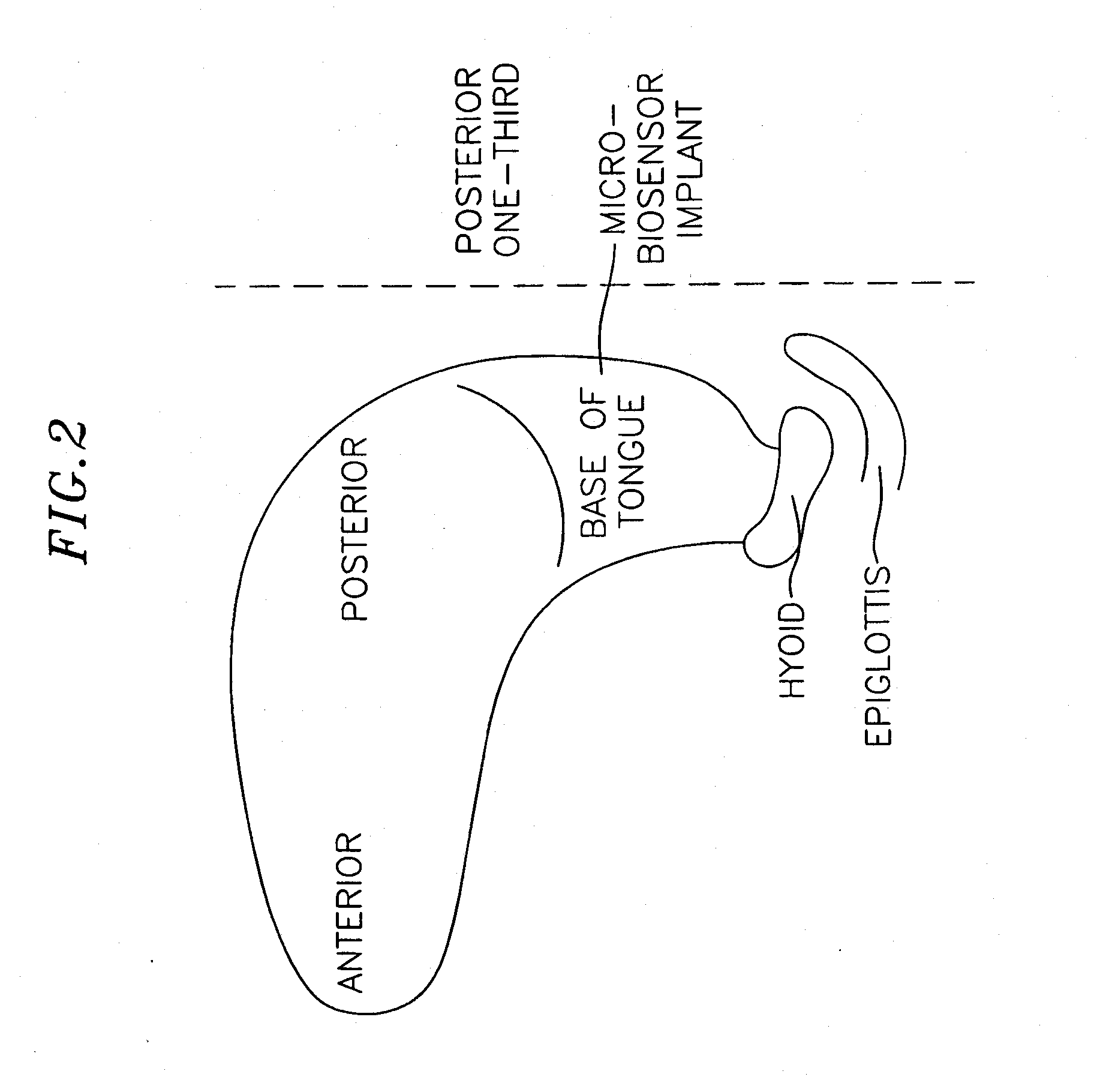Method and apparatus for preventing obstructive sleep apnea
a technology of obstructive sleep apnea and apparatus, which is applied in the field of methods and apparatus for can solve the problems of snoring, hypopnea, apnea, etc., and achieve the effect of preventing obstructive sleep apnea and high patient complian
- Summary
- Abstract
- Description
- Claims
- Application Information
AI Technical Summary
Benefits of technology
Problems solved by technology
Method used
Image
Examples
Embodiment Construction
[0023] The methods and system of the invention provide a surgically implanted electrode or microdevice capable of stimulating the genioglossus muscle (tongue) in the back or lower one-third to one-half of the muscle such that muscle tone is maintained throughout the night, preventing the occurrence of any obstructive sleep apnea events and promoting uninterrupted sleep. Other muscles in the airway may also be implanted and stimulated, or may be affected by glossopharyngeal stimulation according to the invention. Unlike other electrical stimulation methods, the inventive methods are proactive rather than responsive to obstructive events that cause a cessation in breathing, so that rather than a treatment modality, the invention provides a preventative therapy. The implantation is surgical, so patient compliance is high, and because the electrical stimulation used is generally at lower intensities than prior art methods, the patient is more comfortable and less likely to awaken from s...
PUM
 Login to View More
Login to View More Abstract
Description
Claims
Application Information
 Login to View More
Login to View More - R&D
- Intellectual Property
- Life Sciences
- Materials
- Tech Scout
- Unparalleled Data Quality
- Higher Quality Content
- 60% Fewer Hallucinations
Browse by: Latest US Patents, China's latest patents, Technical Efficacy Thesaurus, Application Domain, Technology Topic, Popular Technical Reports.
© 2025 PatSnap. All rights reserved.Legal|Privacy policy|Modern Slavery Act Transparency Statement|Sitemap|About US| Contact US: help@patsnap.com



